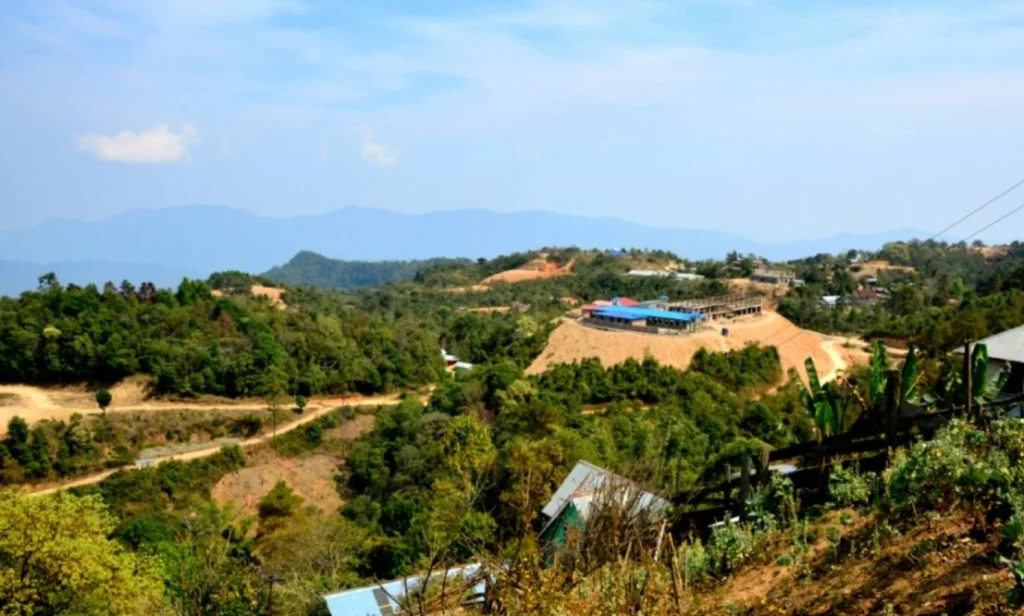Discover the untouched beauty of Kamjong District, Manipur! Explore scenic landscapes, rich tribal heritage, dense forests, and breathtaking natural wonders.

Explore the Hidden Wonders of Kamjong, Manipur!
Nestled in the northeastern corner of Manipur, India, Kamjongg District stands as a testament to the region’s rich cultural diversity and natural beauty. Covering an area of approximately 2,578 square kilometers, this district is a melting pot of ethnicities, languages, and traditions, making it a unique and vibrant part of India’s cultural mosaic.
Kamjong District is characterized by its stunning natural landscapes. The district is blessed with lush green hills, dense forests, and meandering rivers, making it a paradise for nature enthusiasts and adventure seekers. The picturesque landscapes offer countless opportunities for trekking, camping, and wildlife exploration, attracting tourists from far and wide. Dzuko Valley, in particular, is a prominent attraction that entices travelers with its panoramic views and diverse flora and fauna.
One of the most striking aspects of Kamjong District is its rich cultural heritage. The district is home to several indigenous communities, each with its distinct traditions and customs. The Tangkhul Naga tribe is one of the predominant communities in the region, known for its vibrant festivals and unique handicrafts. The Lui-Ngai-Ni festival, celebrated with much fervor, marks the sowing season and showcases the rich cultural heritage of the Tangkhul people. Visitors have the opportunity to immerse themselves in the festivities, witness traditional dances, and savor indigenous cuisine.
The linguistic diversity in Kamjong District is equally fascinating. While Manipuri (Meiteilon) serves as the official language, the region boasts a multitude of dialects and languages spoken by various communities. This linguistic tapestry adds to the cultural richness of the district, fostering an environment where different languages coexist harmoniously.
Kamjongg District’s economic landscape primarily revolves around agriculture. The fertile land here is suitable for the cultivation of a variety of crops, including rice, maize, and various horticultural products. However, the region faces challenges such as limited access to modern farming techniques and infrastructure. Nevertheless, the hardworking farmers of Kamjong continue to work the land, ensuring the sustainability of their livelihoods and contributing to the food security of the state.
In recent years, efforts have been made to promote sustainable tourism in Kamjong District. The government, in collaboration with local communities, has initiated projects to develop eco-friendly tourism infrastructure and conserve the natural environment. These initiatives not only boost the local economy but also encourage responsible tourism practices that respect the district’s delicate ecosystems.
Famous Places in Kamjong District
Kamjong District in Manipur is known for its stunning landscapes, rich tribal heritage, and serene environment. Here are some famous places in Kamjong District:
- Khayang Waterfall – One of the highest waterfalls in Manipur, offering breathtaking views and a refreshing escape into nature.
- Nampi Lok (Nampi Valley) – A beautiful valley known for its lush greenery and picturesque surroundings.
- Choro Cave – A natural cave with unique rock formations, attracting adventure seekers and explorers.
- Kasar Cave – A hidden gem for those who love caving and exploring mysterious underground formations.
- Kamjong Town – The district headquarters, offering a glimpse into the rich Tangkhul Naga culture and traditions.
- Dzuko Valley (Accessible Nearby) – Though mainly associated with Nagaland, parts of the valley can be accessed from Kamjong, known for its rolling hills and seasonal flowers.
- Shirui Hills (Nearby in Ukhrul District) – Famous for the rare Shirui Lily, a must-visit for nature lovers visiting Kamjong.
Read More :-